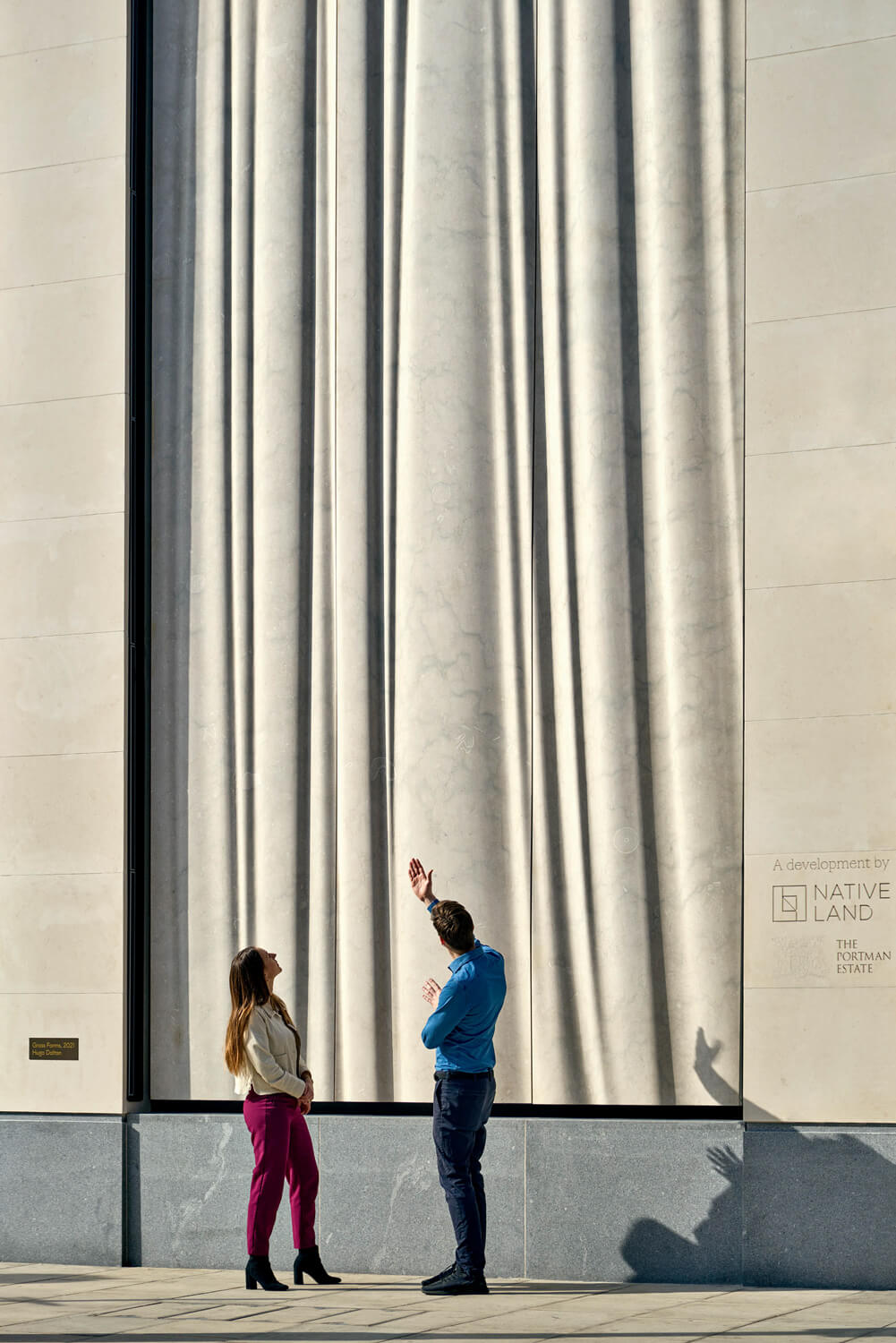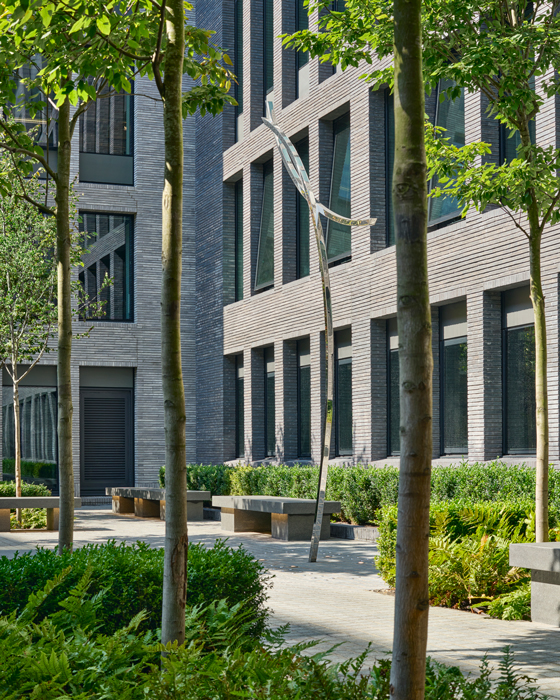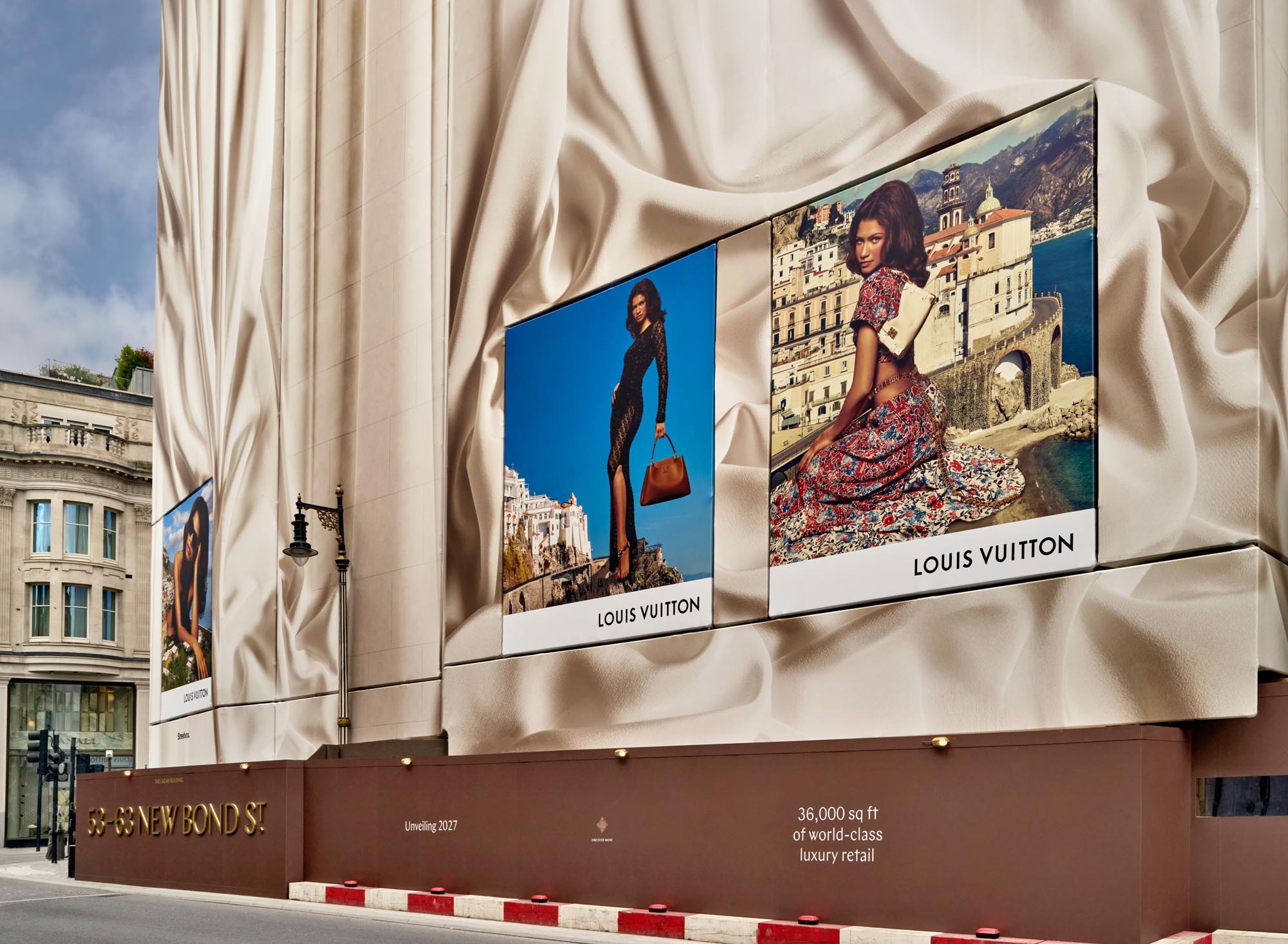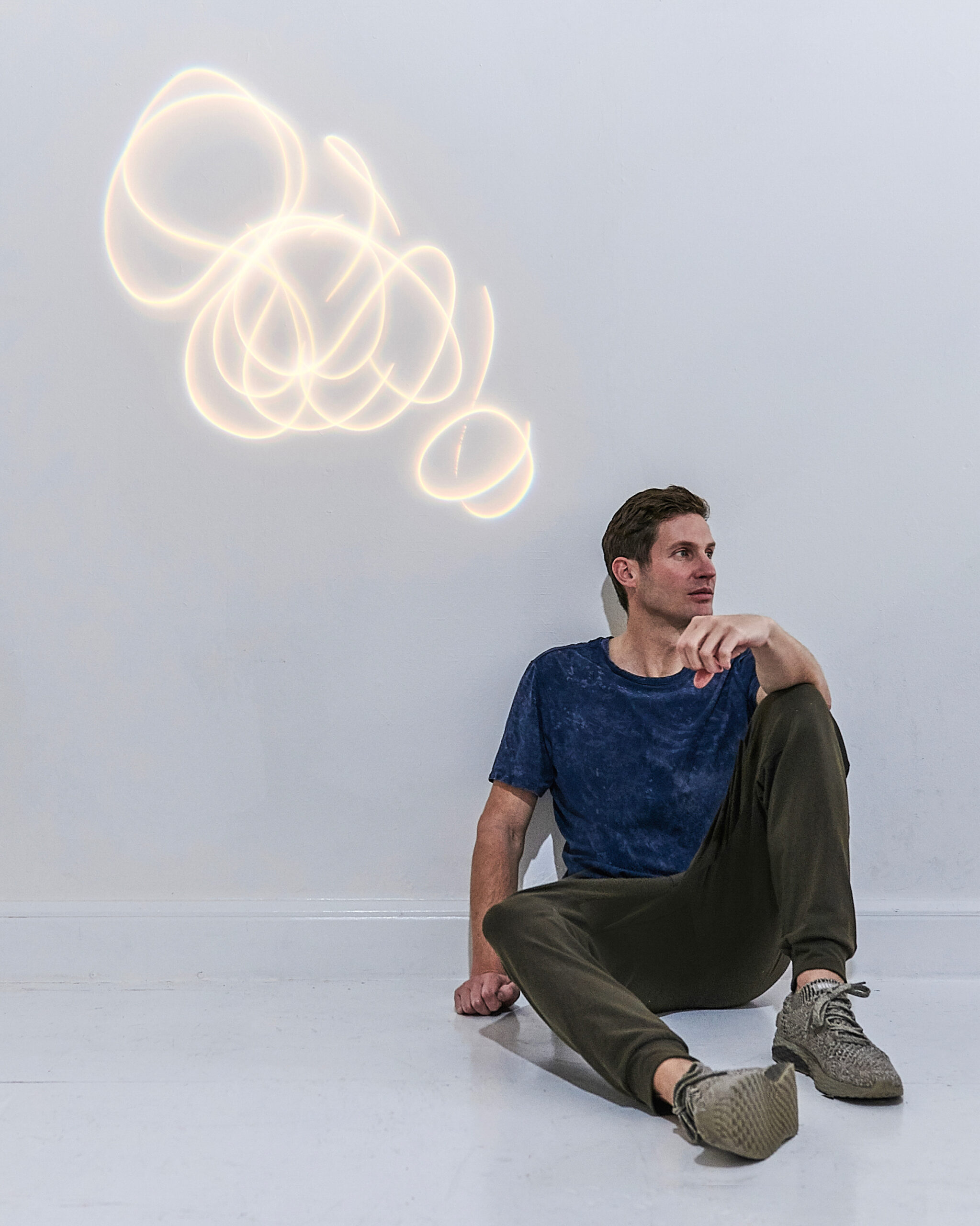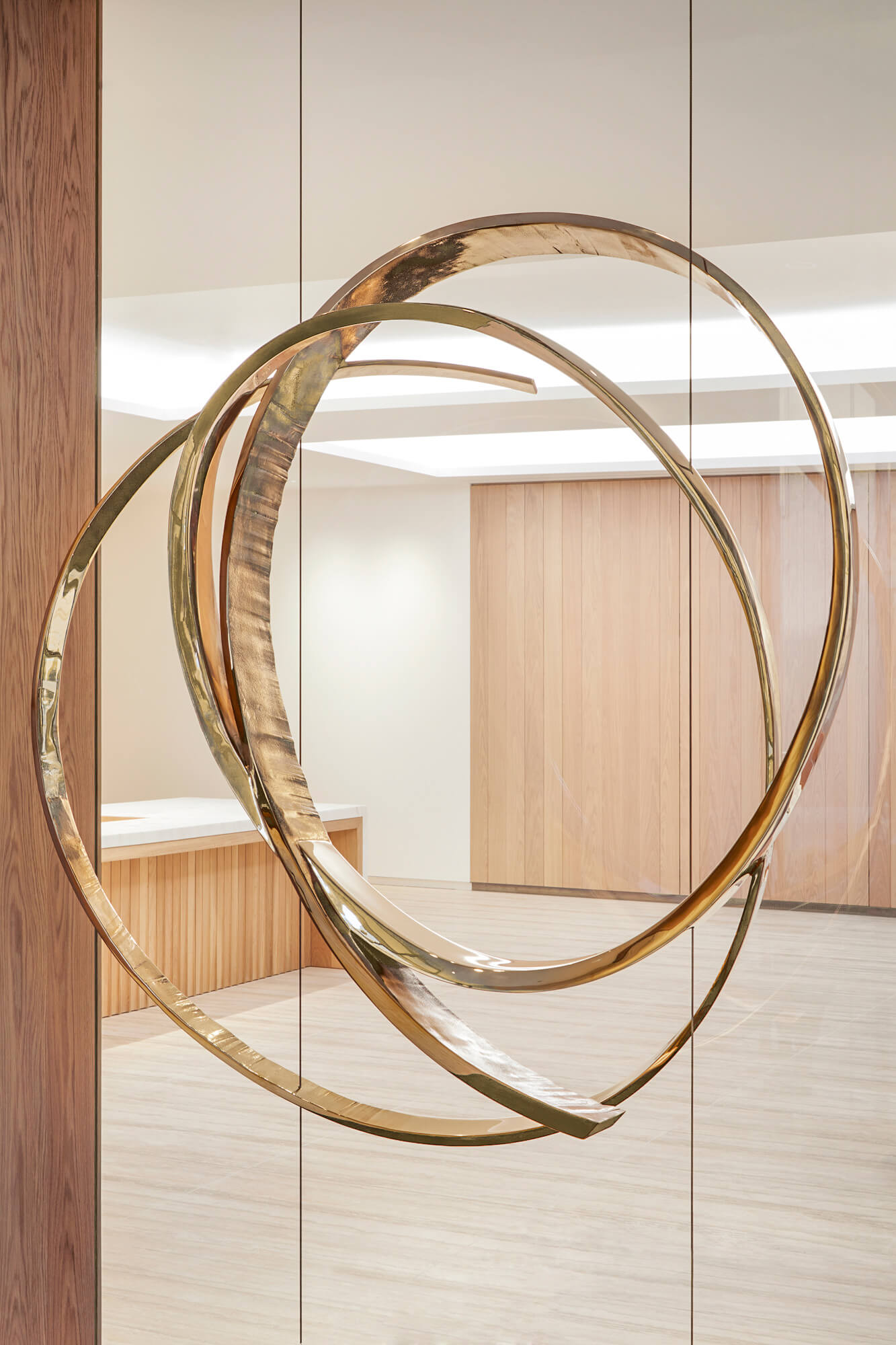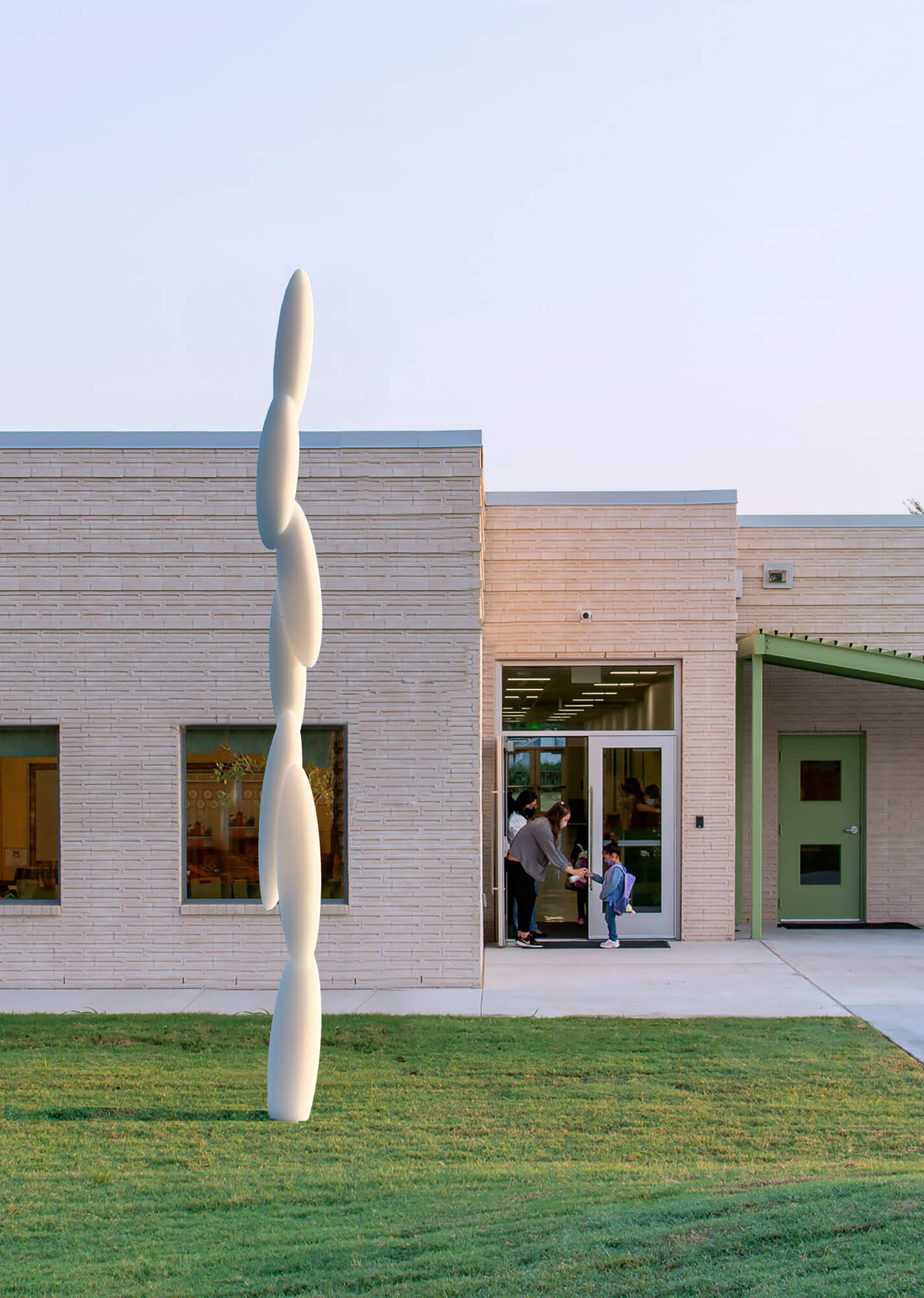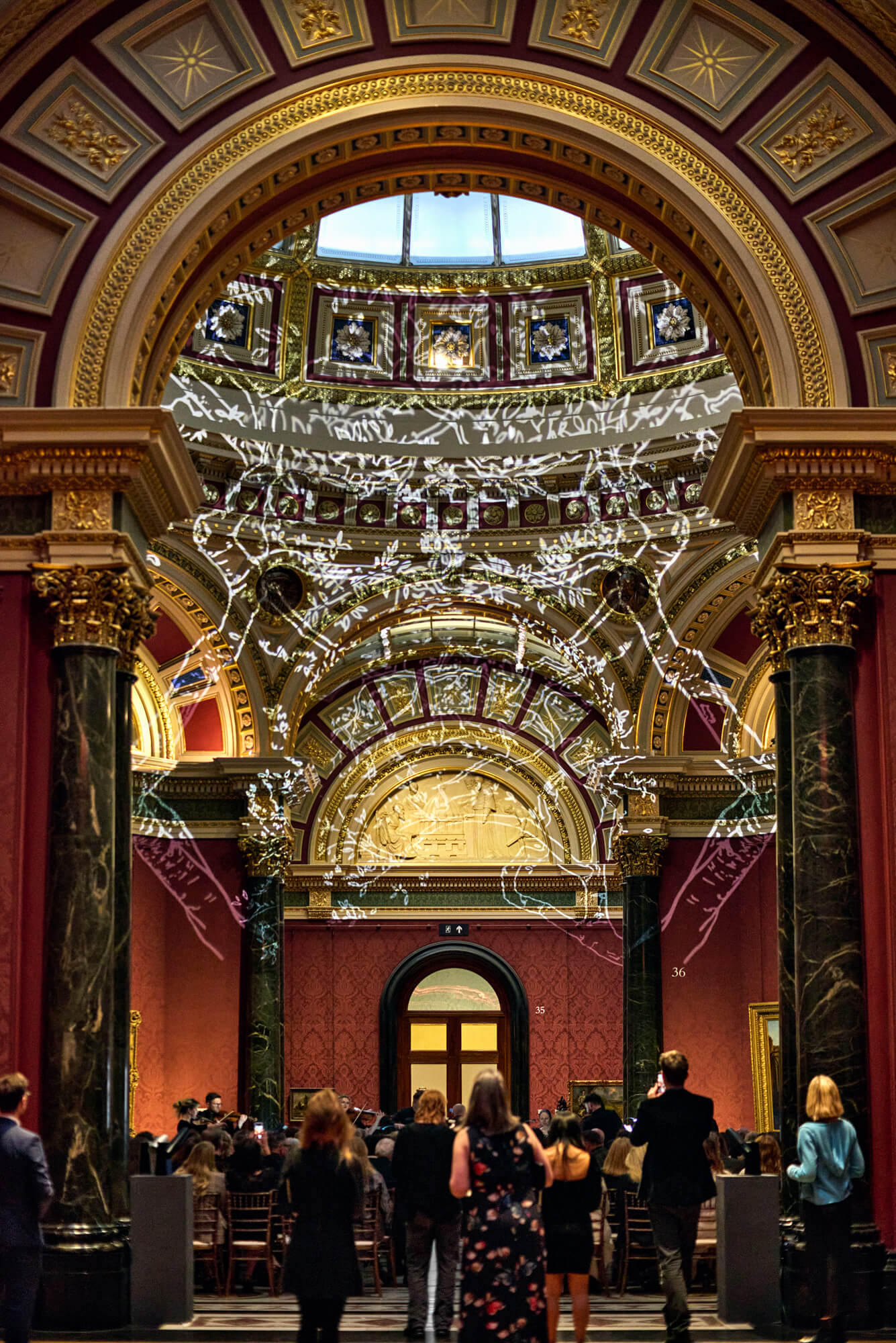Grass Forms for Native Land
Awarded a Natural Stone Award 2024, the Judges commented "a stand-out artwork integrated into the façade. 'Grass Forms' contributes a huge amount of interest and causes people to stop and look. It perfectly demonstrates how sculpture and architecture can be partnered, whilst softening the straight-formality of the main façade. The piece draws you in and tempts you to peek behind the curtain-like form."
SculptureChoreographic Form for Derwent London
In collaboration with Make Architects, this meticulously crafted steel sculpture harmoniously inhabits the park's limited space, asserting a commanding presence without overpowering its surroundings.
SculptureFolding Form
Site specific building wrap on Bond Street with Foster+Partners for Lazari Investments
Wall PaintingsBiography
All of Hugo Dalton’s works find their origins in drawing from life. Working with pencil on paper he looks to capture the energy in any given situation allowing it to take on new life.
About HugoHarmonic Form with Peircy&Co architects
This cast bronze sculpture was developed from a series of drawings made during a collaboration with musicians at the Royal College of Music, London. The sculpture creates the opening moment for the Derwent London head office on Savile Row, London.
SculptureScience and Art outreach project
Artist Hugo Dalton has collaborated with the world leading Rothamsted Research an agricultural laboratory in Hertfordshire for eight years. Following an exhibition at the Fitzwilliam museum, Cambridge he has been developing the collaboration to create a series of artworks designed to be placed in secondary schools around the UK.
Rothamsted websiteBranching Form, National Gallery London
Light installation which responded to the two paintings in the Octagonal gallery, by Claude and JMW Turner. Each depicts the rise of Empires of classical age and by extension their fall. The projected linear drawings distort over the neo classical architecture of the gallery becoming like cracks in the masonry.
Light Drawings
